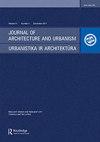默拉皮火山爆发后pagerjurang永久住宅入住后评价
IF 0.8
0 ARCHITECTURE
引用次数: 3
摘要
默拉皮火山于2010年爆发,2011年、2012年和2013年逐步实施了以社区为基础的灾区搬迁工作。因此,本研究采用入住后评价(POE)方法来调查日惹Pagerjurang Kepuharjo村的新(永久)住房模式比旧住房更能让居民有家的感觉,并确定居民在新模式中生活10年后对生活的反应。通过问卷调查收集了24个家庭的反馈,结果显示,由于灾后基本需求的满足,居民在新(永久)住房居住2年后感到舒适,并且不希望回到旧房子生活。据悉,他们对清洁水、卫生、电力、街道、疏散通道等基础设施的精心设计,以及为提高设计效率而精心设计的房屋组合布局等新设施表示满意。政府在房屋成本补贴方面也支持这一模式。总之,新的社区(永久性)住房有能力创造一种温馨的氛围,并有助于缓解火山爆发后的恢复。本文章由计算机程序翻译,如有差异,请以英文原文为准。
POST-OCCUPANCY EVALUATION OF PAGERJURANG PERMANENT HOUSING AFTER THE MERAPI VOLCANIC ERUPTION
Merapi Volcano erupted in 2010 and a community-based relocation of the destroyed area was implemented step by step in 2011, 2012, and 2013. This study, therefore, employed the Post-Occupancy Evaluation (POE) Method to investigate the ability of the new (permanent) housing model in Pagerjurang Kepuharjo Village, Yogyakarta to make its residents feel at home more than the old one and to determine the residents’ responses to their life after 10 years of living in the new model. Questionnaires were used to collect responses from 24 families and the results showed the residents became comfortable after 2 years of living in the new (permanent) housing due to the fulfillment of the post-disaster basic needs and do not wish to be back and live in their old houses. They were also reported to have felt satisfied with the new facilities such as the well-designed infrastructure including clean water, sanitation, electricity, streets, and evacuation routes as well as the well-designed layout with the houses built together (gotong-royong) to ensure more efficiency in terms of design. The model was also supported by the Government in terms of housing cost subsidy. In conclusion, the new community-based (permanent) housing has the ability to create a homey atmosphere and helps to ease the post-eruption recovery.
求助全文
通过发布文献求助,成功后即可免费获取论文全文。
去求助
来源期刊

Journal of Architecture and Urbanism
ARCHITECTURE-
CiteScore
1.30
自引率
14.30%
发文量
12
审稿时长
15 weeks
期刊介绍:
The Journal of Architecture and Urbanism publishes original research on all aspects of urban architecture.
 求助内容:
求助内容: 应助结果提醒方式:
应助结果提醒方式:


